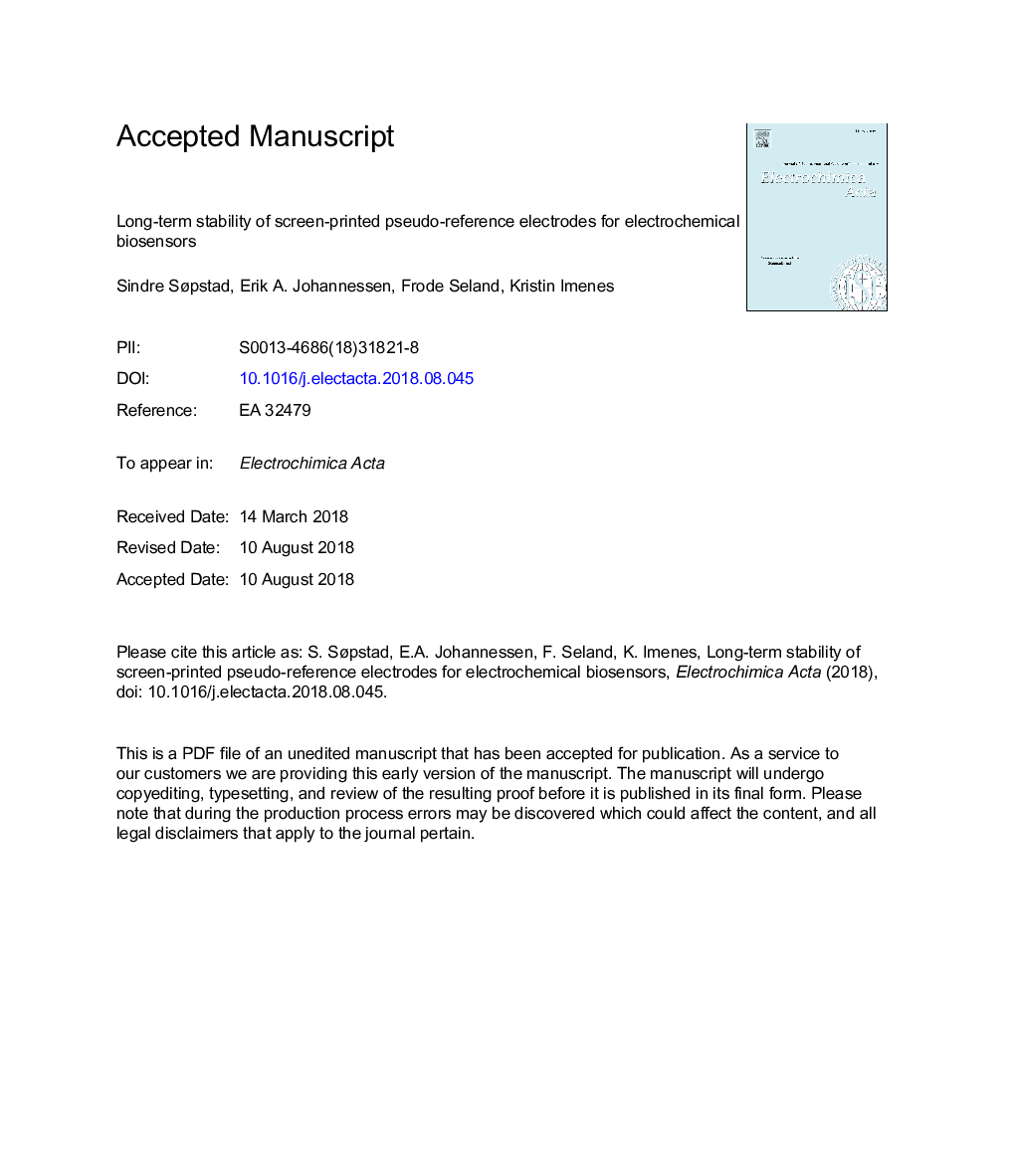| Article ID | Journal | Published Year | Pages | File Type |
|---|---|---|---|---|
| 8946845 | Electrochimica Acta | 2018 | 15 Pages |
Abstract
Pseudo reference electrodes forms an essential part of electrochemical transducers, where they are used to maintain a reference potential for the system. Yet, little is known about their long-term stability, and any drift may cause undesired changes in the sensor signal. This paper investigates the stability of the reference potential of five material systems of screen-printed reference electrodes. Their potential was continuously monitored for a duration of 40 days in a phosphate buffered solution, and any signal changes were corroborated with EDX elemental analyses, SEM micrographs and cyclic voltammetry. The electrodes were considered to be stable as long as they remained within 30â¯mV of their initial potential throughout the study. It was found that Ag/AgCl electrodes with a 3:1 atomic ratio kept a stable reference potential (±2.2â¯mV), whereas Ag/AgCl electrodes with a 9:1 atomic ratio, despite showing good overall constancy of ±3.2â¯mV, seemed to statistically lose stability towards the end of the 40 day trial due to AgCl depletion through dissolution. The daily potential drift for the respective Ag/AgCl electrodes were â0.2â¯mV (3:1 ratio) and â0.1â¯mV (9:1 ratio), suggesting a proportionality between the amount of dissociated AgCl close to the electrode surface and the initial AgCl loading. Electrodes consisting of only Ag showed tendencies towards a mixed potential contribution, which reduced the long-term stability (±24.2â¯mV) as well as the longevity span (2 days). Ag/Pd electrodes proved to be more unstable (±29.7â¯mV), with an average lifetime of around 3.5 days. Pt had the greatest potential instability (±59.8â¯mV), rendering its average lifetime to less than a day. It was shown that electrodes which deviates from the Ag/AgCl equilibrium had the greatest potential variation with time.
Related Topics
Physical Sciences and Engineering
Chemical Engineering
Chemical Engineering (General)
Authors
Sindre Søpstad, Erik A. Johannessen, Frode Seland, Kristin Imenes,
